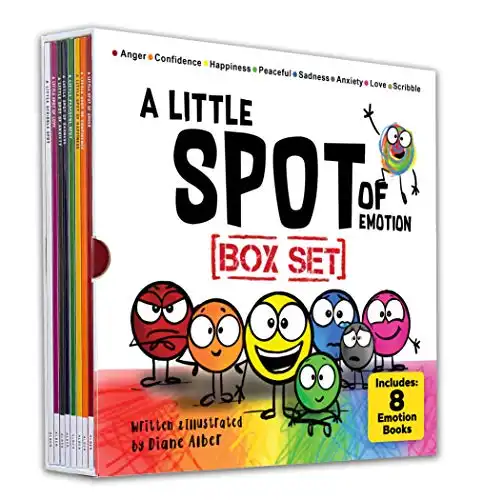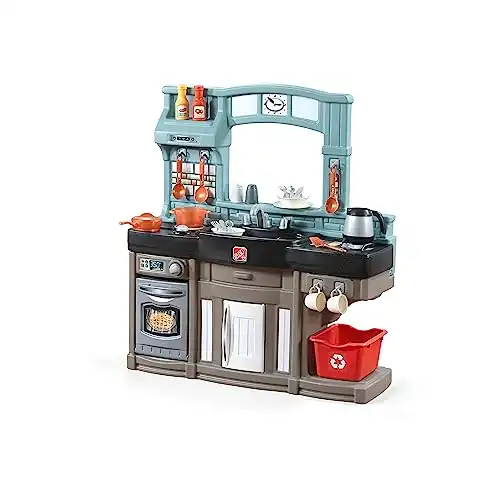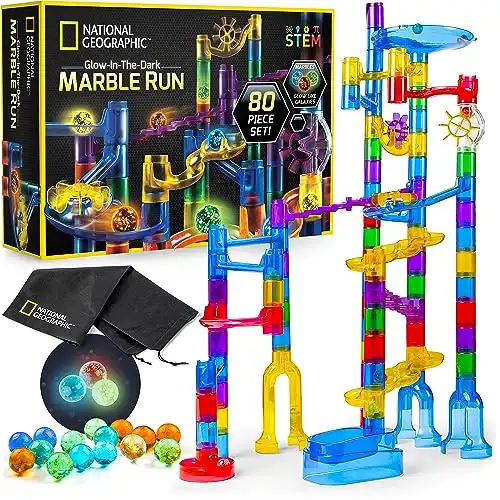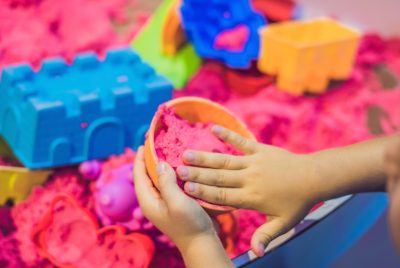Why Open Ended Play is Essential for Your Child’s Cognitive and Emotional Development
When we think about play, we often picture children running around, laughing, and having fun. But did you know that play, especially open-ended play, is much more than just fun and games? It’s a vital part of your child’s development, shaping their cognitive abilities, emotional well-being, and even social skills. In this article, I’ll walk you through why open-ended play is essential for your child’s cognitive and emotional development and how you can easily incorporate it into their daily routine.
What is Open-Ended Play?
Open-ended play is a type of play where there are no specific rules, instructions, or outcomes. Imagine giving your child a box of building blocks or a set of art supplies. Instead of telling them to build a house or draw a specific picture, you let them decide what to create. This freedom allows them to explore, experiment, and express themselves in ways that structured activities simply can’t.
Whether your child is building a tower, pretending to be a superhero, or simply exploring with playdough, open-ended play encourages them to think outside the box, try new things, and learn from their mistakes.
Understanding Different Types of Play
Not all play is created equal. It’s important to recognize the difference between structured and unstructured play.
Structured play, like board games or organized sports, has rules and specific goals. While these activities are valuable, they often limit creativity and self-expression. Unstructured play, on the other hand, allows children to take the lead, using their imagination to guide the activity. This is where open-ended play shines.
The Importance of Play in Child Development
Play is more than just a way for kids to pass the time. It’s a critical component of healthy development. Through play, children learn about the world around them, develop new skills, and build the foundation for future learning and relationships. – Lets delve a bit deeper into the many benefits of play for child development.
Cognitive Benefits of Open-Ended Play
One of the most significant advantages of open-ended play is its impact on cognitive development.
Enhancing Problem-Solving Skills
When children engage in open-ended play, they often face challenges or obstacles. Maybe the tower they’re building keeps toppling over, or they’re trying to figure out how to mix colors to get the perfect shade. These situations push them to think critically and come up with solutions on their own, strengthening their problem-solving skills.
Fostering Creativity and Imagination
Open-ended play is like a blank canvas for your child’s imagination. Without instructions or predetermined outcomes, they’re free to create whatever their heart desires. This kind of play nurtures creativity, encouraging them to think in new and innovative ways. Whether they’re building a rocket ship out of cardboard boxes or pretending to be explorers in a jungle, the possibilities are endless.
Encouraging Independent Thinking
In a world where children are often told what to do and how to do it, open-ended play provides a refreshing break. It empowers kids to make their own decisions, leading to the development of independent thinking. They learn to trust their instincts, make choices, and take ownership of their play, all of which are crucial skills for later in life.
Emotional Benefits of Open-Ended Play
Beyond cognitive development, open-ended play also plays a crucial role in emotional growth. Here’s how it helps your child on an emotional level.
Building Emotional Resilience
Life isn’t always easy, and kids need to learn how to handle setbacks and frustrations. Open-ended play offers a safe space for them to experience and work through these emotions. Maybe their tower falls down for the fifth time, or their painting doesn’t turn out the way they wanted. Through these experiences, they learn resilience and how to cope with disappointment, which are important skills for emotional health.
A little spot was developed with children, parents and teachers in mind. These books have been carefully crafted to make not only teaching SEL fun learning it too!
Enhancing Social Skills and Collaboration
While open-ended play can be done solo, it’s also a fantastic opportunity for social interaction. When children engage in open-ended play with friends, they practice communication, negotiation, and collaboration. They learn to share ideas, listen to others, and work together to achieve a common goal, all of which are essential social skills.
Nurturing Self-Esteem and Confidence
There’s something incredibly empowering about being in control of your own play. When children are free to make decisions and see their ideas come to life, it boosts their self-esteem and confidence. They begin to see themselves as capable and creative individuals, which positively impacts their self-worth.
How to Encourage Open-Ended Play at Home
Now that we’ve explored the benefits, you might be wondering how to encourage open-ended play in your own home. Don’t worry; it’s easier than you might think!.
The Role of Toys and Materials
When it comes to fostering open-ended play, the toys and materials you provide play a crucial role. Unlike traditional toys with a single purpose—think of a puzzle or a remote-controlled car—open-ended toys invite creativity, exploration, and multiple uses. These toys don’t dictate how they should be used, leaving it entirely up to your child’s imagination. Below, I’ll dive into some excellent examples of open-ended toys and explain how each one can be used to support your child’s development.
Building Blocks
Examples: LEGO Bricks, Wooden Blocks, Magnetic Tiles
Building blocks are perhaps the quintessential open-ended play toys. Whether your child is using wooden blocks, LEGO bricks, or magnetic tiles, the possibilities are endless. They can construct anything from a simple tower to an intricate castle or even a spaceship. What’s great about building blocks is that they encourage problem-solving, spatial awareness, and fine motor skills. For younger children, stacking blocks helps develop hand-eye coordination, while older kids can work on complex structures that challenge their engineering thinking.
How They Encourage Open-Ended Play:
- Creativity: Children can design and build their own structures, limited only by their imagination.
- Problem-Solving: Figuring out how to balance blocks or create stable structures enhances critical thinking.
- Collaboration: When playing with others, kids learn to negotiate roles, share materials, and combine ideas.
Art Supplies
Examples: Crayons, Markers, Paints, Clay, Paper
Art supplies are another fantastic category of open ended play toys. With a blank piece of paper and some crayons or paints, children can express their thoughts, feelings, and stories visually. Clay and playdough also allow for three-dimensional creativity, where children can sculpt and mold anything from animals to imaginative creatures. The lack of predetermined outcomes in art play means that every creation is unique and personal to the child, fostering a sense of accomplishment and pride.
How They Encourage Open-Ended Play:
- Self-Expression: Art allows children to communicate ideas and emotions that they might not yet have the words to express.
- Fine Motor Skills: Manipulating tools like paintbrushes, crayons, and clay strengthens small muscle control.
- Imagination: Without a set project, children are free to create whatever comes to mind, sparking creativity and innovation.
Pretend Play Props
Examples: Dolls, Action Figures, Dress-Up Clothes, Kitchen Sets
Pretend play props are excellent for sparking imaginative scenarios. Dolls and action figures can become characters in elaborate stories, while dress-up clothes allow children to step into different roles, from a superhero to a chef or a doctor. Kitchen sets and play food encourage role-playing and help children understand everyday activities. Pretend play is not just about fun; it’s a powerful way for kids to explore different perspectives, understand social roles, and practice empathy.
Entertain your kid for hours with realistic molded-in sink with faucet, large countertop, refrigerator, and oven with working doors, supports role play, develop social skills, make sense of real-life situations
How They Encourage Open-Ended Play:
- Social Skills: Role-playing helps children understand social cues, develop empathy, and practice communication.
- Language Development: Acting out scenarios often involves dialogue, which helps expand vocabulary and language skills.
- Emotional Exploration: Children can work through real-life situations and emotions by acting them out in a safe, controlled environment.
Loose Parts
Examples: Pebbles, Shells, Buttons, Beads, Fabric Scraps
Loose parts are a fantastic open-ended resource because they can be anything the child imagines. A collection of pebbles might become currency in a market, beads might be used to create jewelry, and fabric scraps could be turned into clothing for dolls. Loose parts encourage sorting, categorizing, and sequencing, which are foundational STEM skills, all while promoting creativity and innovation.
How They Encourage Open-Ended Play:
- Math and Science Skills: Sorting and categorizing objects helps develop early math concepts like patterns and sequences.
- Creativity: With no set purpose, loose parts can be used in any number of ways, depending on the child’s creativity.
- Problem-Solving: Children often have to figure out how to connect, balance, or arrange loose parts to achieve their vision.
Nature-Based Materials
Examples: Sticks, Leaves, Stones, Pinecones
Nature provides some of the best open-ended materials. Sticks can become swords, wands, or building materials; stones might be used in pretend cooking, or as part of a game; leaves and pinecones could be transformed into art projects. The natural world is an ever-changing playground that offers endless opportunities for exploration and creativity.
How They Encourage Open-Ended Play:
- Connection to Nature: Playing with natural materials helps children develop an appreciation for the environment.
- Sensory Development: Different textures, shapes, and sizes of natural objects stimulate the senses.
- Imagination: Since natural items don’t come with instructions, they encourage kids to use their imagination to create games and stories.
Open-Ended Play Kits
Examples: Tinker Toys, Marble Runs, Construction Sets
Open-ended play kits often come with a variety of pieces that can be combined in countless ways. Tinker Toys and construction sets allow children to build and rebuild different structures, machines, or vehicles. Marble runs, for instance, are a great way to introduce basic physics concepts as children experiment with different configurations to see how marbles will move.
The National Geographic 80-Piece Glow-in-the-Dark Marble Run Construction Set has everything kids need to create incredible marble runs that will have their glowing marbles racing toward the finish line!
How They Encourage Open-Ended Play:
- Engineering Skills: Building and tinkering with these kits helps children understand basic engineering and physics concepts.
- Critical Thinking: Figuring out how different pieces fit together to create a functional structure enhances critical thinking.
- Persistence: These kits often require trial and error, teaching children the value of perseverance and problem-solving.
Limiting Screen Time and Structured Activities
While screen time and structured activities have their place, it’s important to balance them with opportunities for open-ended play. Try to set aside specific times during the day when your child can engage in unstructured, creative play without the distractions of screens or tightly scheduled activities.
Be Encouraging Without Interfering
While it’s important to be supportive, it’s equally important not to interfere too much. Offer encouragement and show interest in what your child is doing, but resist the urge to direct their play. Let them take the reins and guide the activity in their own way.
Instead of jumping in to offer suggestions or solutions, try observing your child as they play. You might be surprised at how resourceful and imaginative they can be when given the space to explore on their own.
Real-Life Examples of Open-Ended Play
To give you some inspiration, here are a few real-life examples of open-ended play that you can easily incorporate into your child’s routine.
Everyday Household Items as Play Tools
You don’t need expensive toys to encourage open-ended play. Items like cardboard boxes, old sheets, and kitchen utensils can become the foundation for hours of creative fun. A cardboard box can be a spaceship, a car, or a house—the only limit is your child’s imagination!
Outdoor Adventures and Nature Play
Nature offers endless opportunities for open-ended play. Whether it’s collecting leaves, building a fort with sticks, or simply exploring a park, the great outdoors is a fantastic place for your child to engage in imaginative play.
Collaborative Play with Friends
Encourage your child to play with friends or siblings without a fixed agenda. Whether they’re playing “house,” building a city out of blocks, or pretending to be pirates, collaborative open-ended play helps them develop social skills and strengthens friendships.
Closing Thoughts From Me
In a world that’s increasingly structured and scheduled, open-ended play offers a breath of fresh air. It’s a powerful tool for nurturing your child’s cognitive and emotional development, fostering creativity, resilience, and independence. By encouraging open-ended play, you’re not just giving your child a way to pass the time—you’re giving them the tools they need to thrive.
FAQ’s
What age is appropriate for open-ended play? Open-ended play can be introduced as early as toddlerhood and is beneficial at any age. Even older children and teens can benefit from unstructured creative activities.
How much time should my child spend on open-ended play? There’s no set amount of time, but try to ensure your child has daily opportunities, even if it’s just for 30 minutes.
Can open-ended play help with learning disabilities? Yes, open-ended play can be particularly beneficial for children with learning disabilities, as it allows them to explore and learn at their own pace, in a stress-free environment.
What if my child prefers structured play? That’s okay! Try gradually introducing more open-ended play by providing materials that encourage creativity and letting your child take the lead.
How can I balance open-ended play with educational activities? Open-ended play is educational in its own right. However, you can balance it by integrating learning concepts into play—like counting blocks or exploring science through nature play.







